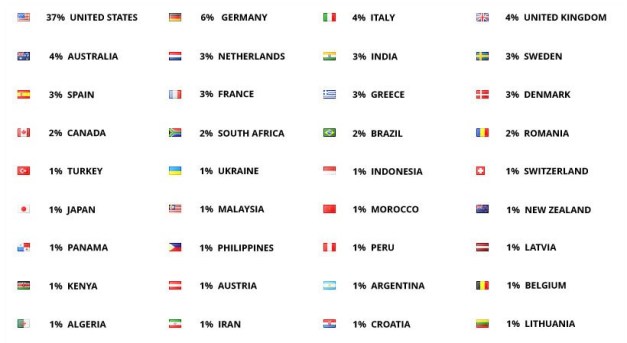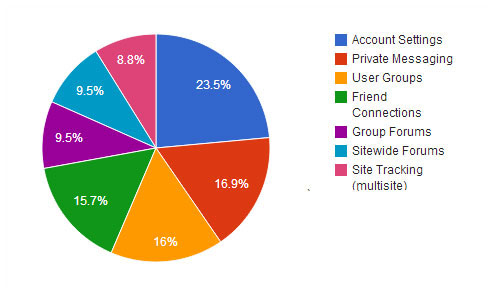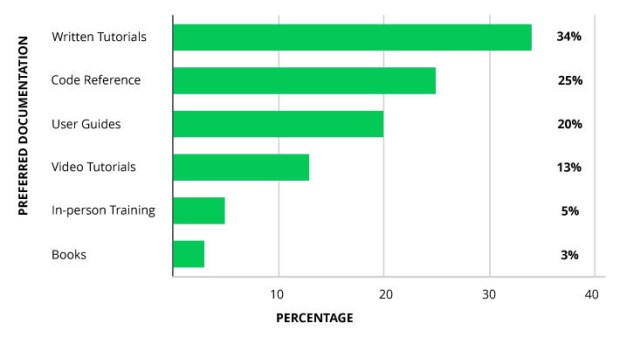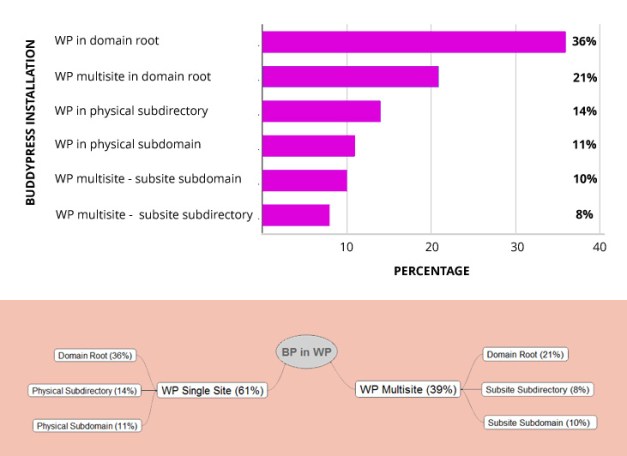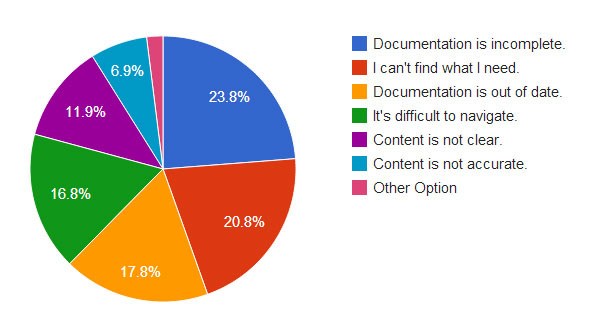While this survey is packed full of fascinating results, I’d like to highlight just a few of them here:
Nearly 50% of BuddyPress sites are in languages other than English.
Respondents hailed from 36 different countries and results show that 56% of BuddyPress sites are built using English as the language and the other half is comprised of various languages from around the world. The top 10 include: 1) English (56%), 2) Spanish, 3) Italian, 4) French, 5) German, 6) Dutch, 7) Swedish, 8) Portugese, 9) Chinese, and 10) Greek.
It’s clear to see that BuddyPress is an international community. We’re spread out all over the globe! If you’re a BuddyPress plugin developer, you need to localize your plugins. Hopefully we can include some more detailed references on localization when it comes time to revamp the codex.
Only 15% of BuddyPress sites surveyed make use of the Friends component.
When you think about social networks, oftentimes the friends component is what you might assume would be the most important. This survey reveals otherwise:
I was surprised that the Groups component wasn’t activated on more sites, as it is probably the most flexible and has the most extensions. These numbers might indicate that many people are using BuddyPress for its more robust profile and account management capabilities, rather than for its social features. Not one of the social components reached more than 20%.
90% of BuddyPress developers surveyed are male.
Do these numbers surprise you? I would have imagined there would be a few more female developers who responded, but perhaps the survey did not reach them. However, these numbers really should not deter female developers from getting involved. From my experience attending BuddyCamp Vancouver, the BuddyPress community is made up of some of the nicest people you will ever meet. Even in the support forums you will find that people are generally very welcoming and helpful to new developers. BuddyPress is still a relatively small community and it’s easy to start getting involved and making a difference.
People prefer to learn BuddyPress through written tutorials.
This has been my suspicion for awhile and now it is confirmed. Developers are not looking for fancy video tutorials and they are only marginally interested in books and in-person training when it comes to learning about BuddydPress. They want written tutorials, references and guides that they can quickly scan and come back to when needed.
39% of BuddyPress sites are installed within a WordPress multisite network.
Perhaps this one isn’t much of a surprise, given that in the beginning you could only use BuddyPress with WordPress multisite. After BuddyPress was made to be compatible with single site WordPress installations, one would have thought that they would become the vast majority, since it’s the easiest way to set up WordPress. But it appears that usage on multisite vs. single site is almost 50/50. What this tells me is that blogs are still a very important aspect of BuddyPress social networks.
What does this mean for the codex? We absolutely need more documentation on using BuddyPress within a multisite environment.
It looks like the largest task at hand will be to fill in any bald spots in the codex and improve the navigation. It’s not so much that the content is unclear or outdated but rather it’s just not there at all. Creating new sections and adding to existing ones will probably be the main focus in improving the codex.
35% of BuddyPress developers surveyed are willing to contribute to the codex.
Wow, that’s an amazing response from the BuddyPress community developers who are ready and willing to help make the codex a more useful resource. Many thanks to @hnla and @mercime for all their hard work in analyzing the responses from the survey and providing these handy graphs for these results. By far, one of the biggest complaints about BuddyPress is the lack of documentation. With all the capable volunteers stepping forward, things are about to change for the better.
Original: wptavern.com
